This post may contain affiliate links. Please read our disclosure policy.
How to make silky ginger milk pudding, a Chinese-originating magic ginger curd made by combining milk, ginger juice, and optionally sugar for a silky pudding in under 10 minutes!
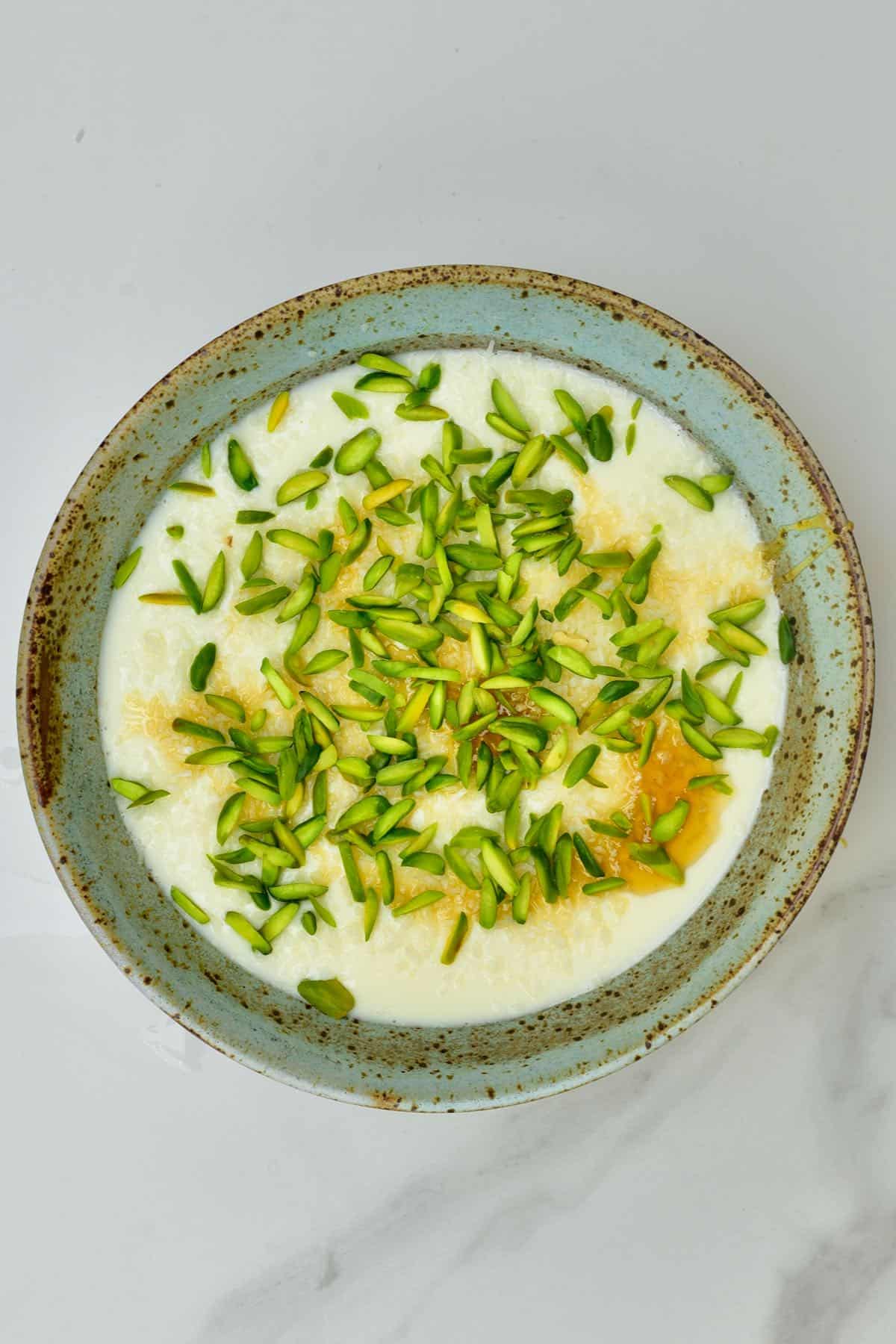
When it comes to making custards, puddings, and tarts, we usually have to rely on thickening agents like eggs or starches like agar and cornstarch. However, all you need for this ginger milk pudding is ginger juice and milk for a soft, flavorful pudding (aka ginger milk curd).
Recently, I’ve majorly upped my ginger game. I’ve shared posts on how to peel ginger, make ginger puree, ginger syrup, ginger juice, and now it’s the turn of this 2-ingredient ginger milk curd. Perfect for making with kids and impressing family – plus it’s ready in under 10 minutes!
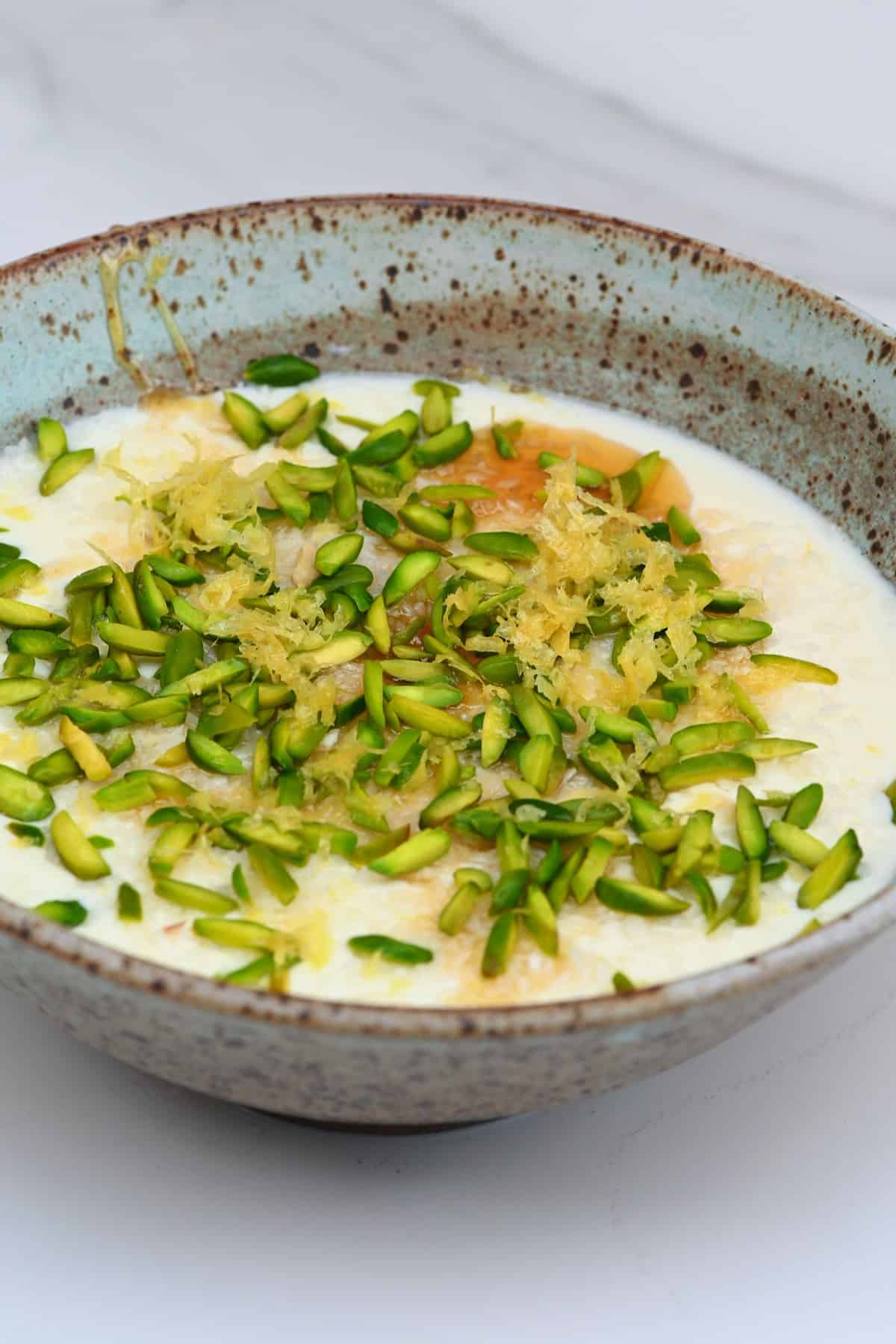
Even better, for those on particular diets – I actually made this ginger pudding sugar-free (and rely on sweet toppings), for a light, healthy, ginger-spiked dessert!
Love ginger? You might also like these recipes for ginger lemonade, ginger chips, and ginger powder. You might also like this mango sago pudding, regular creamy rice pudding, Vietnamese avocado shake, or chia pudding, as they are pudding-like dishes!
Want to save this recipe?
What is ginger milk pudding?
This simple ginger curd is known under several names: ginger milk curd, ginger milk pudding, ginger milk, ginger juice milk curd, etc. It is essentially a hot dessert, originating in Southern China, in the Guangdong province. The ginger curd combines ginger, milk, and sugar to set off a chemical reaction that naturally thickens the mixture and turns it into a silky ginger milk pudding with no egg whites or starches required!
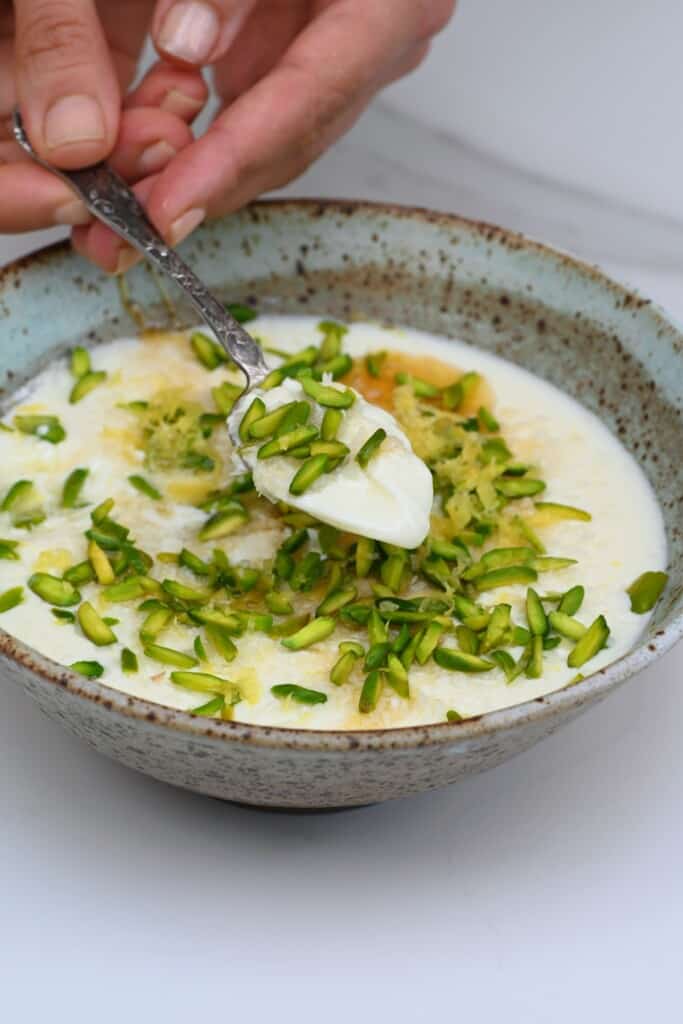
How does it work? Well, it works in a similar way to making natural yogurt and cheese (like homemade ricotta cheese or goat cheese), where an acid (like lemon juice) is added to the heated milk to cause it to curdle and curds to form. However, unlike with cheese, the ginger forms curds that, while initially small, end up coagulating the entire mixture to form a soft silky texture.
The Ingredients
- Ginger: use older ginger; the one that is tan in color with a more fibrous texture. Older ginger has more of the needed enzymes to produce the curdling.
- Milk: use whole dairy milk for the best results. The extra fat content will help to provide the best texture and flavor! Traditionally buffalo milk is used, so feel free to try if you can source some.
- Sugar (optional): feel free to add a little sugar/sweetener of your choice to balance against the heat of the ginger. However, sugar could make the pudding softer.
- Toppings: I used a combination of crushed pistachios, coconut flakes, lemon zest, and raw honey. Feel free to use your preferred toppings.
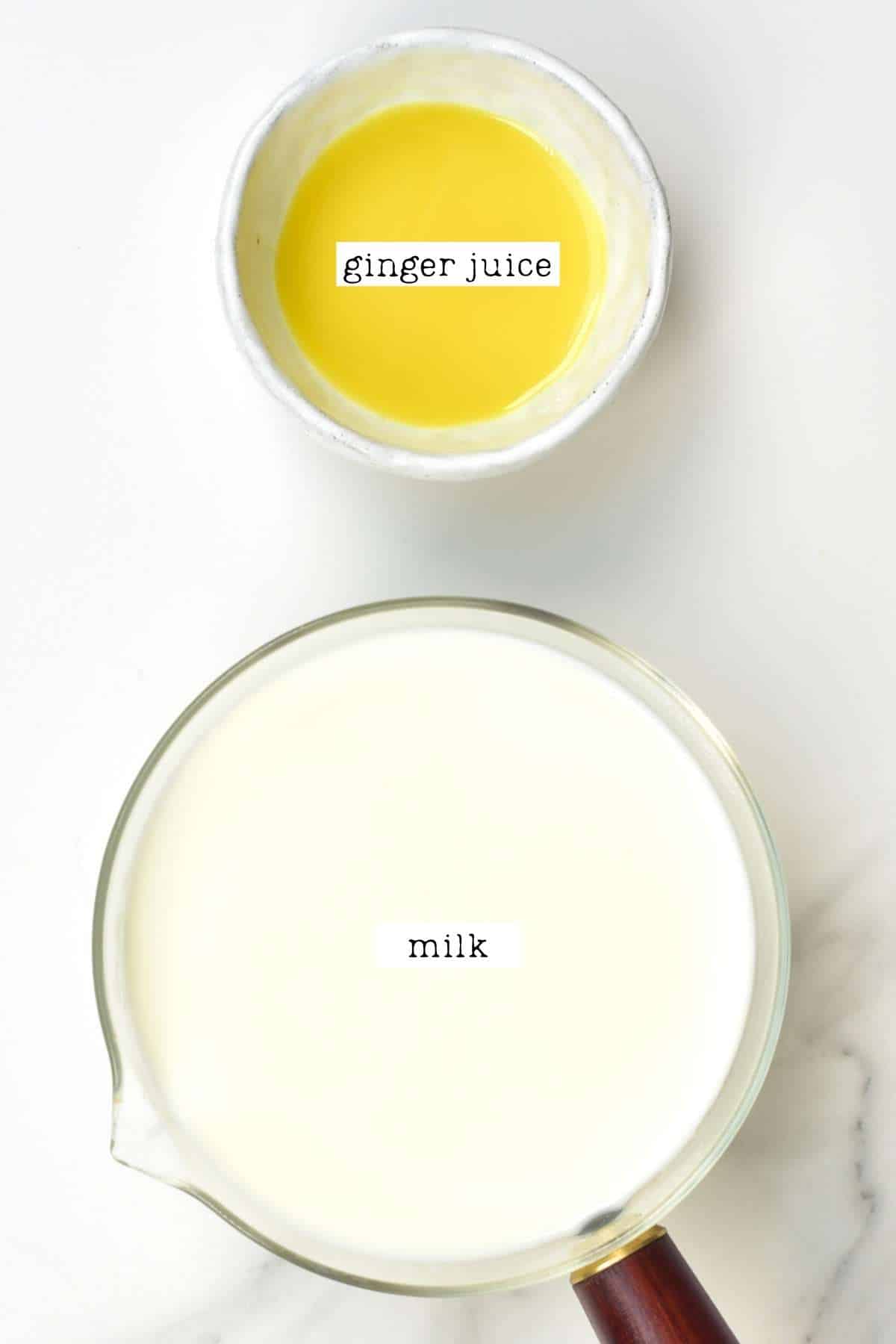
Top Tips for Ginger Milk Curd
Because this pudding relies on a chemical reaction, it’s not always foolproof. However, I’ve made this several times and have never had an issue, though. I did pick up a few tips before my very first attempt, so that may have helped.
- The ginger juice: the enzyme in the ginger that produces the curdling increases in older ginger. For that reason, I recommend using older ginger and making sure to use freshly-squeezed juice, too. I don’t recommend using previously frozen ginger as that may affect the enzymes needed for the curdling.
- The optimal temperature: the correct temperature is key in making this ginger milk curd correctly. While 158ºF/70ºC is the best temperature for combining the two, I’ve found that 149ºF/65ºC yields a better texture and results.
- Don’t dilly dally: this entire recipe requires a bit of speed. The juice needs to be freshly (FRESHLY) extracted; as soon as the milk reaches temp, pour it over the juice and allow it to set.
- Make sure to shake the ginger: just before you add the milk, make sure to shake or mix the ginger juice – this will make sure the starch in the juice is mixed up, which is critical for the curdling!
- Please don’t move the mixture: after pouring the milk over the ginger, cover it in something and leave it be! Don’t move the bowl or stir the milk, or it can impact the curdling process.
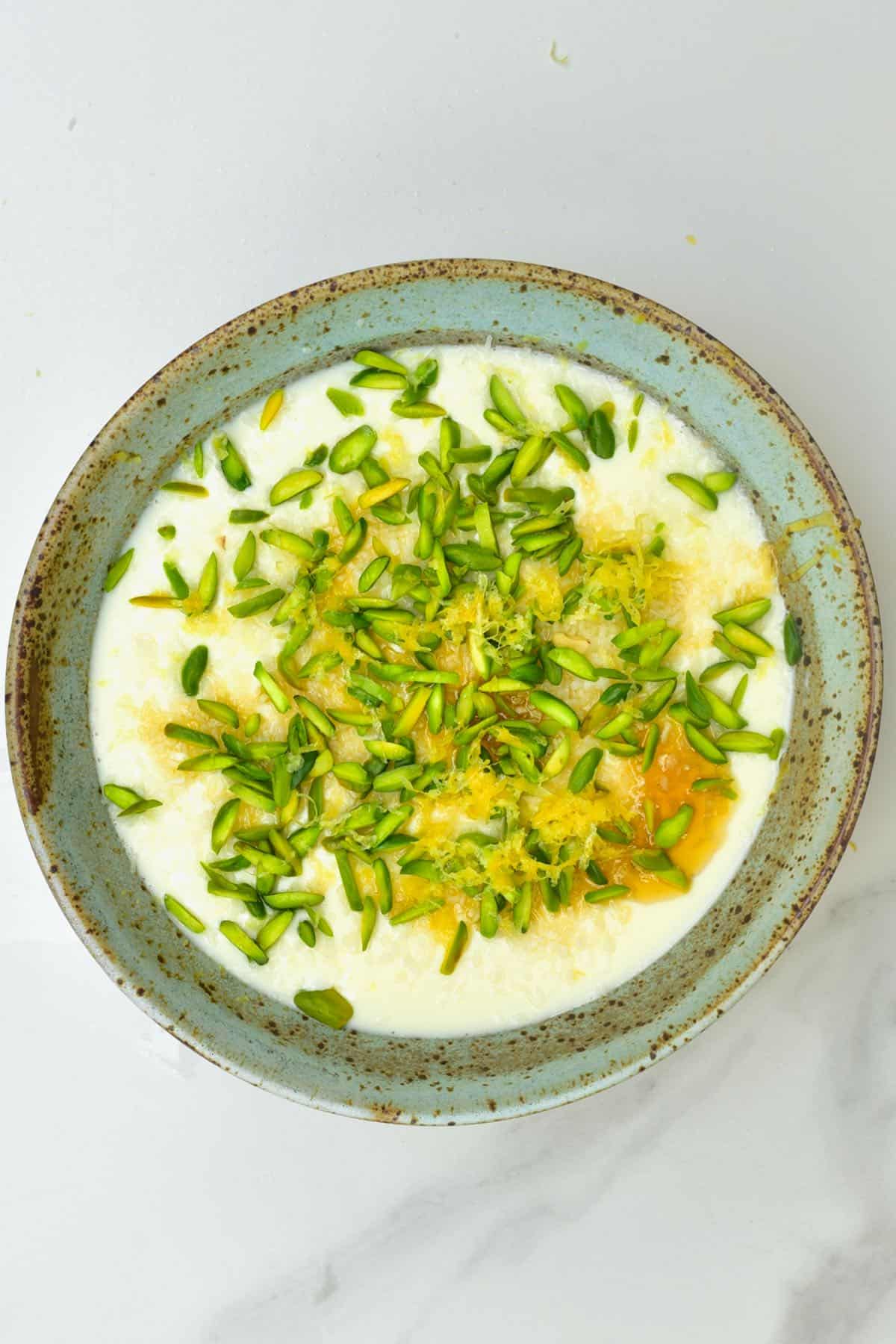
How to Make Ginger Milk Pudding
Step 1: Prepare the ginger juice
First, grate, mince, or blend the ginger into a pulp and squeeze out the juice. If you have one, you could also use a juicer. Then transfer the juice to a bowl.
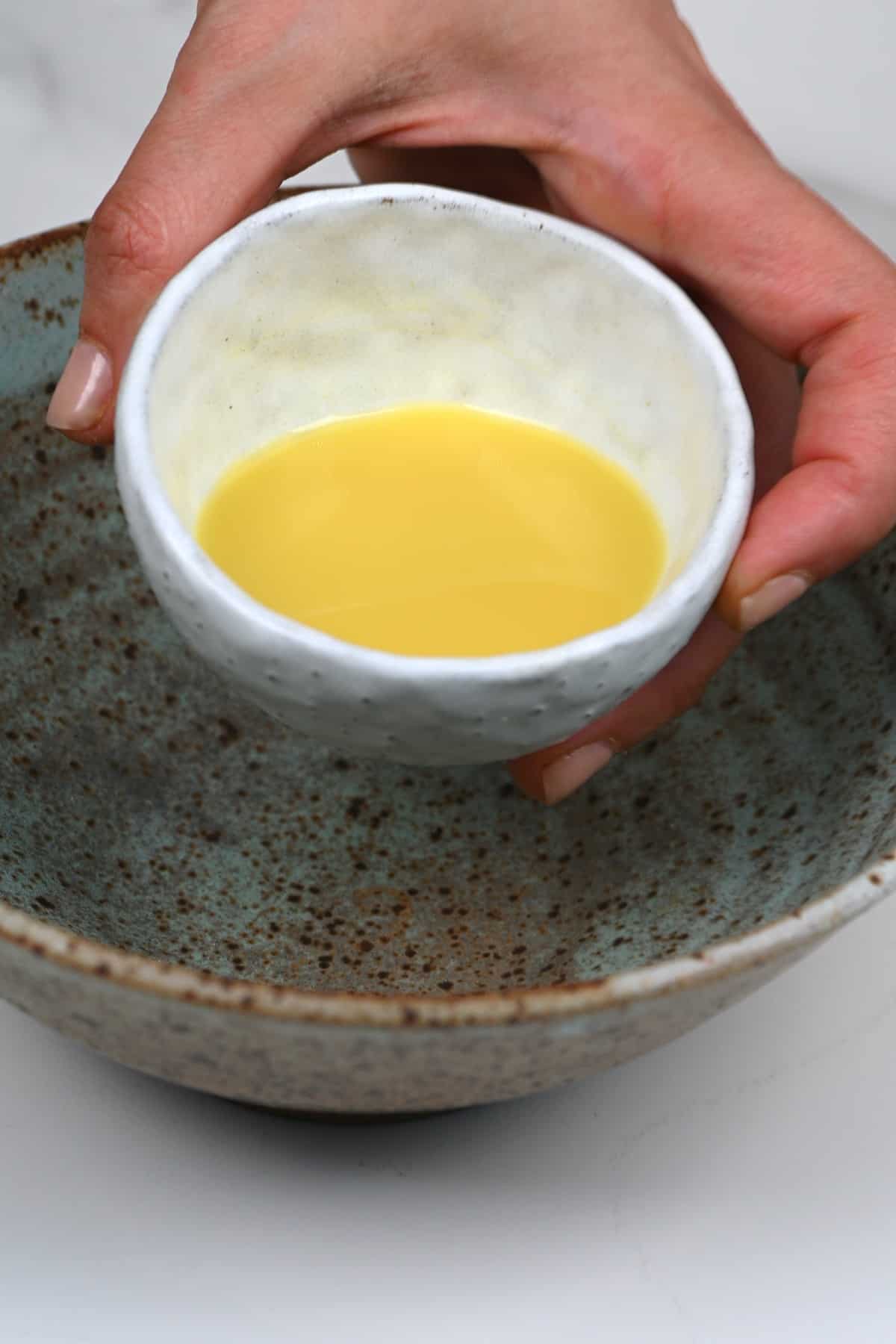
Step 2: Heat the milk
Heat up the milk to 149ºF/65ºC, make sure not to go above that. If you do, then make sure it definitely doesn’t go above 158ºF/70ºC (otherwise, you’ll kill the enzymes that cause the curdling).
If you go above that, then wait for the milk to drop back down to 149ºF/65ºC.
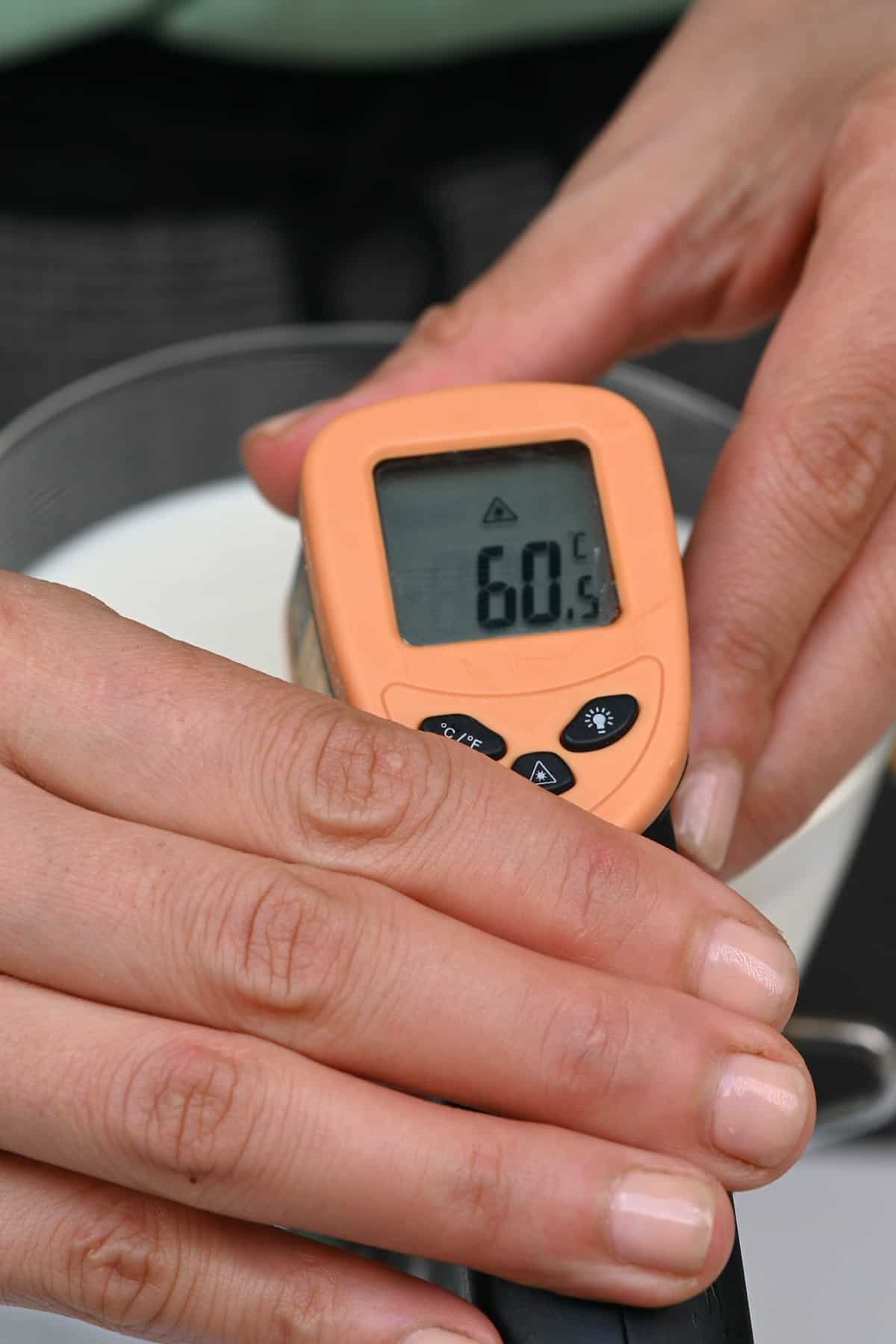
If you’re using sugar in the recipe (I recommend ½-1 Tbsp per serving), then add it to the milk while you heat it, so it can melt.
Step 3: Combine the ingredients
Give the ginger juice a quick shake in the bowl and then pour the heated milk over the ginger juice and cover the bowl, allowing it to steam for 10 minutes.
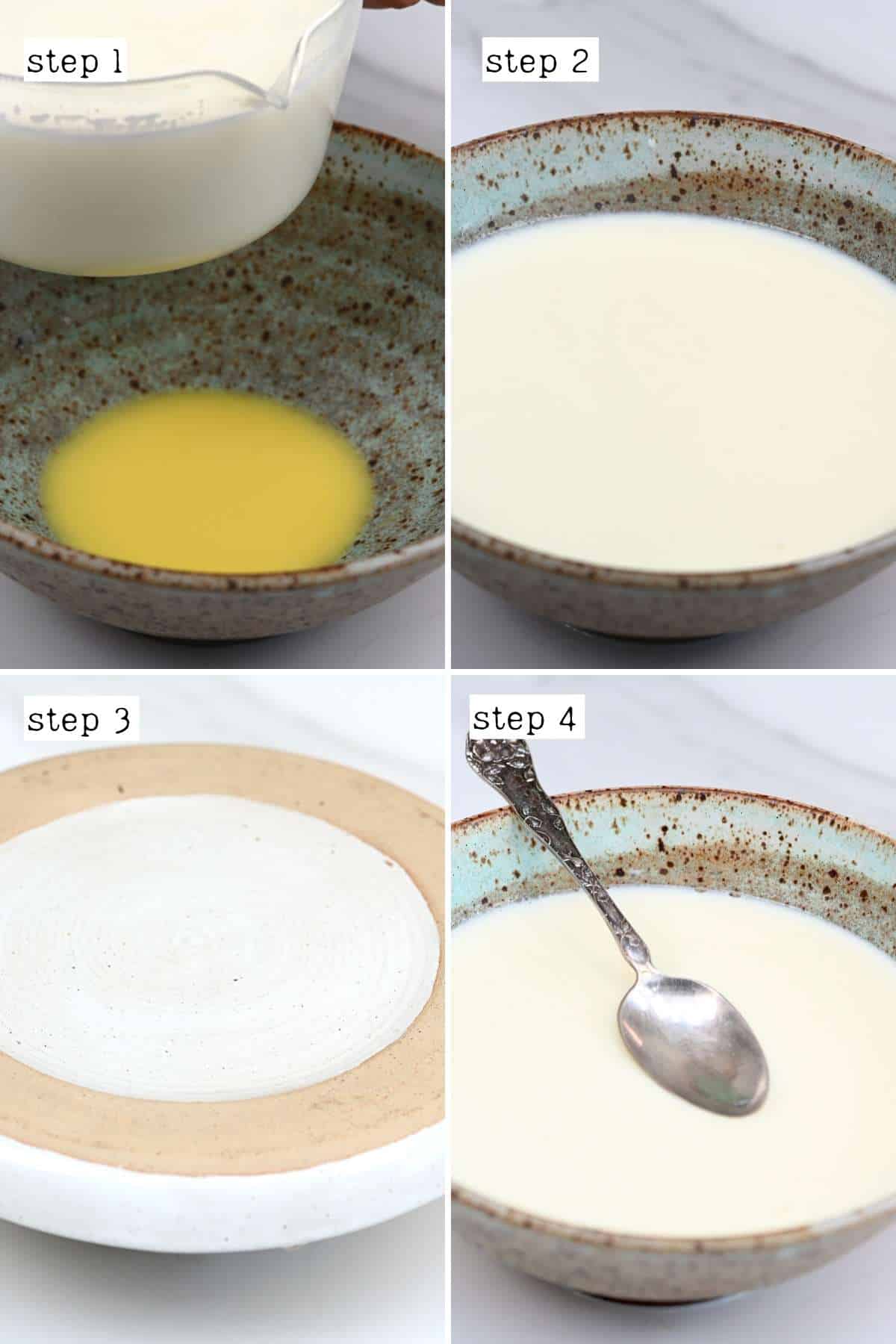
If you pour the milk in from a slight height, then it will allow the ingredients to mix better (as we don’t want to stir it at all!)
When you remove the cover, the pudding should have turned into a ginger milk pudding with a soft silken-tofu texture.
Step 4: Top and serve
You can enjoy the ginger pudding immediately while still warm or allow it to chill/cool down first.
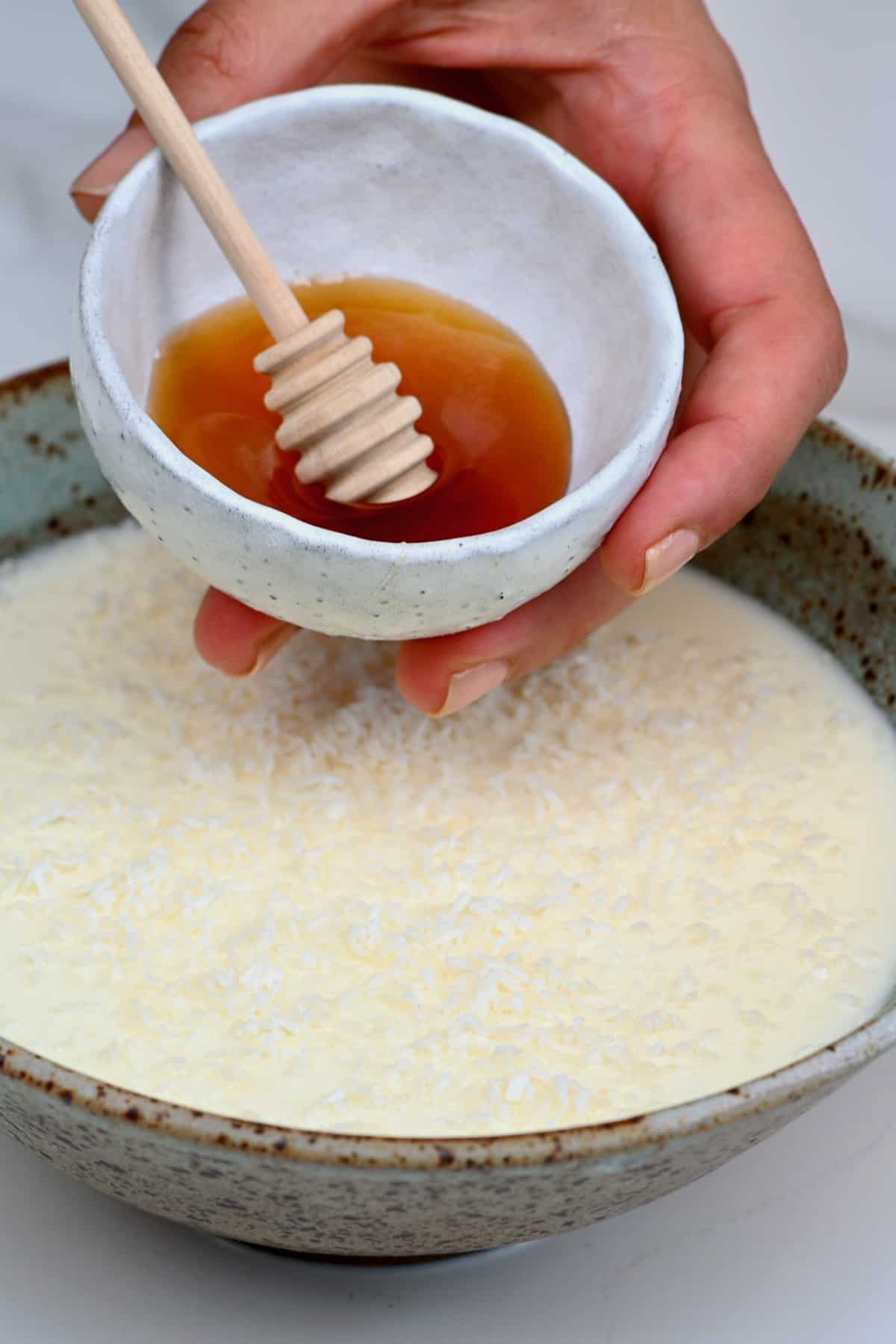
Serve the ginger milk curd with your favorite toppings. I used some pistachios, coconut flakes (raw or toasted), lemon zest, and raw honey for sweetness. Enjoy!
How to Store?
Once prepared, I recommend enjoying it fresh for the best results. However, leftover ginger milk pudding can be stored in the refrigerator for up to two days, covered.
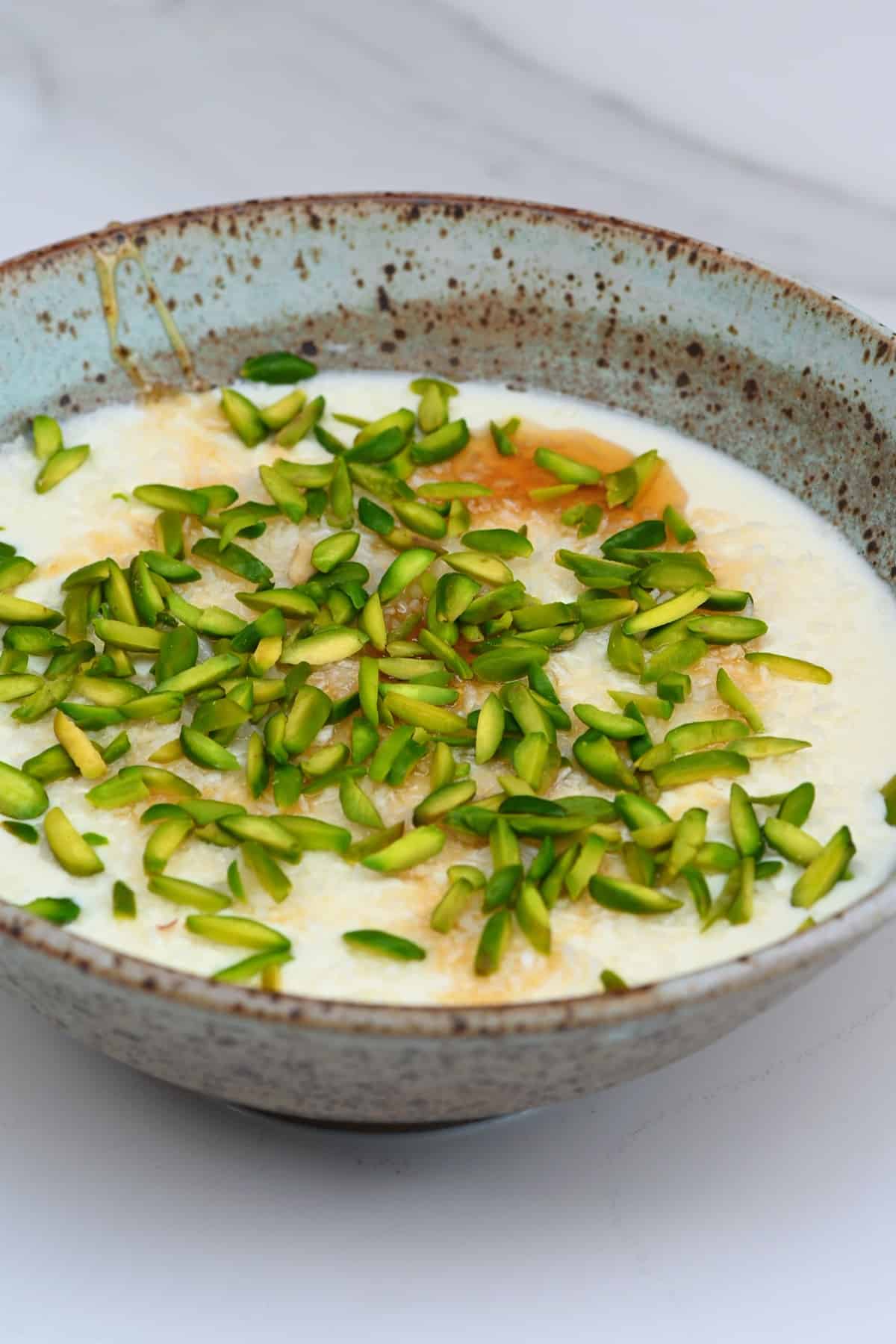
FAQs
You may be able to strain the pudding in a similar way to homemade yogurt, though it isn’t something I’ve tried. To test this, transfer the set pudding to a cheesecloth-lined fine-mesh sieve and allow it to drain for several hours or overnight. You can do this over a bowl in the fridge.
I haven’t experimented enough with this to know for sure. However, I think it may be possible with homemade soy milk for this process too (as it curds well – like when making tofu). However, I haven’t tried, so I can’t guarantee results. Let me know if you try!
It’s very soft. I liken it to silken tofu but possibly even softer. The pudding almost “melts” in your mouth.
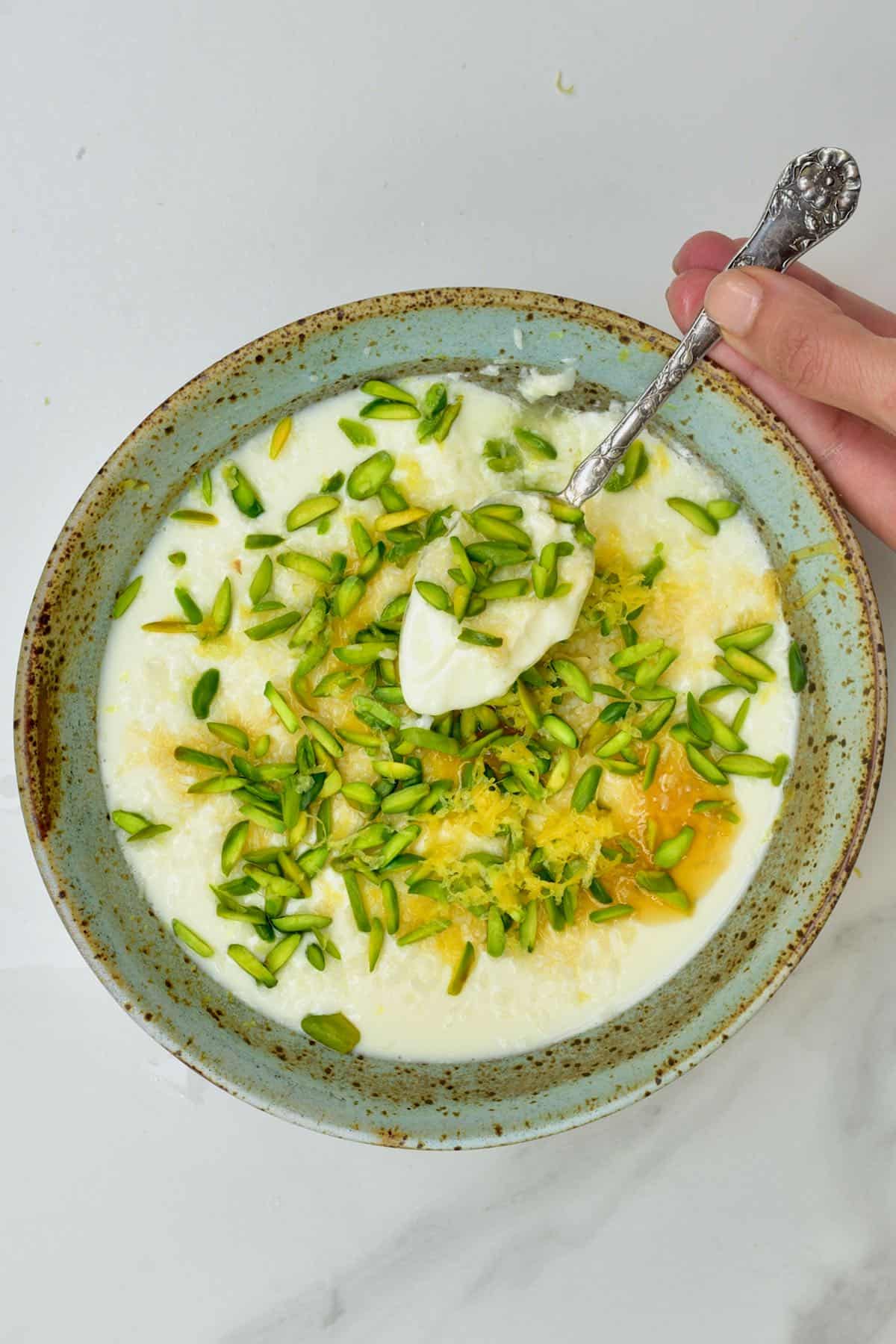
More Recipe Notes
- Don’t reduce the ginger juice amount: the ratio of ginger juice to milk is important for achieving curdling.
- If you want to add sugar: I recommend using 2-3 teaspoons of sugar. If it’s not sweet enough, you can use sweet toppings as I did with the raw honey.
- Pour the milk quickly: not only will this stop the temperature from reducing further, but it will also help the ingredients to mix better for optimal curdling.
- The temperature of your bowl may impact the pudding: if your bowl is too cold, it may cool down the milk too quickly for the curdling to properly occur. You can pre-warm the bowl/s by filling them with hot water and draining/drying them just before adding the ginger juice and milk.
- If the pudding hasn’t set properly: a reader let me know that steaming the pudding (in a steamer basket) for a few minutes may help it to curd if it hasn’t worked well initially. This works best when there’s some sign of curdling, but not fully.
Other Creamy Desserts and Drinks
- Stovetop Lebanese Rice Pudding (Riz bi Haleeb)
- Chocolate hummus
- Simple eclairs (3 ways)
- Thai sweet coconut sticky rice and mango
- Homemade caramel ice-cream
- Homemade bean-to-bar chocolate
- Healthy chocolate fudge
- Vegan avocado mousse
- Avocado Pistachio Ice-cream
- How to Make Crystallized Ginger (Candied Ginger)
If you try this ginger syrup recipe, I’d love to hear your thoughts/questions below. Also, I’d really appreciate a recipe card rating below, and feel free to tag me in your recipe recreations on Instagram @Alphafoodie!
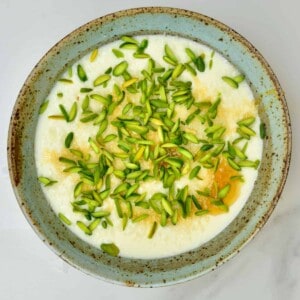
Silky Ginger Milk Pudding (Ginger Curd)
Ingredients
- 2 cups dairy milk I used full-fat
- 1 Tbsp ginger juice freshly made from older ginger
- 1 Tbsp sweetener of choice I topped it with honey. Alternatively, add a sweetener like sugar while heating the milk
Optional toppings
- crushed pistachios
- coconut flakes
- lemon zest
Instructions
Step 1: Prepare the ginger juice
- Grate, mince, or blend the ginger into a pulp and squeeze out the juice. If you have one, you could also use a juicer. Then transfer the juice to a bowl.
Step 2: Heat the milk
- Heat up the milk to 149ºF/65ºC, make sure not to go above that. If you do, then make sure it definitely doesn’t go above 158ºF/70ºC (otherwise, you’ll kill the enzymes that cause the curdling).
- If you go above that, then wait for the milk to drop back down to 149ºF/65ºC.If you’re using sugar in the recipe (I recommend ½-1 Tbsp per serving), then add it to the milk while you heat it, so it can melt.
Step 3: Combine the ingredients
- Give the ginger juice a quick shake in the bowl and then pour the heated milk over the ginger juice and cover the bowl, allowing it to steam for 10 minutes.If you pour the milk in from a slight height, then it will allow the ingredients to mix better (as we don’t want to stir it at all!)When you remove the cover, the mixture should have turned into a ginger milk pudding with a soft silken-tofu texture.
Step 4: Top and serve
- You can enjoy the ginger pudding immediately, while still warm, or allow it to chill/cool down first.Serve the ginger milk curd with your favorite toppings. I used some pistachios, coconut flakes (raw or toasted), lemon zest, and raw honey for sweetness. Enjoy!
How to Store?
- Once prepared I recommend enjoying it fresh for the best results. However, leftover ginger milk pudding can be stored in the refrigerator for up to two days, covered.
Notes
- The ginger juice: the enzyme in the ginger that produces the curdling increases in older ginger. For that reason, I recommend using older ginger and making sure to use freshly-squeezed juice, too. I don’t recommend using previously frozen ginger as that may affect the enzymes needed for the curdling.
- The optimal temperature: the correct temperature is key in making this ginger milk curd correctly. While 158ºF/70ºC is the best temperature for combining the two, I’ve found that 149ºF/65ºC yields a better texture and results.
- Don’t dilly dally: this entire recipe requires a bit of speed. The juice needs to be freshly (FRESHLY freshly) extracted, and, as soon as the milk reaches temp, pour it over the juice and allow it to set.
- Make sure to shake the ginger: just before you add the milk, make sure to shake or mix the ginger juice – this will make sure the starch in the juice is mixed up which is critical for the curdling!
- Don’t move the mixture: After pouring the milk over the ginger cover it with something and leave it be! Don’t move the bowl or stir the milk or it can impact the curdling process.
More Recipe Notes
- Don’t reduce the ginger juice amount: the ratio of ginger juice to milk is important for achieving curdling.
- If you want to add sugar: I recommend using 2-3 teaspoons of sugar. If it’s not sweet enough, you can use sweet toppings as I did with the raw honey.
- Pour the milk quickly: not only will this stop the temperature from reducing further, but it will also help the ingredients to mix better, for optimal curdling.
- The temperature of your bowl may impact the pudding: if your bowl is too cold, it may cool down the milk too quickly for the curdling to properly occur. You can pre-warm the bowl/s by filling them with hot water and draining/drying them just before adding the ginger juice and milk.
- If the pudding hasn’t set properly: a reader let me know that steaming the pudding (in a steamer basket) for a few minutes may help it to curd if it hasn’t worked well initially. This works best when there’s some sign of curdling, but not fully.
Read the post for more tips and the answers to several FAQs!
Nutrition
Nutrition information is automatically calculated, so should only be used as an approximation.

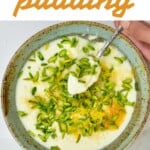
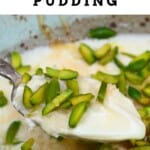
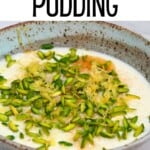
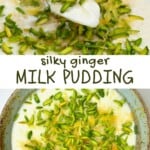
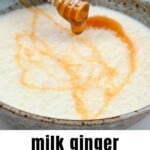









pudding is one of my favorite desserts. adding toppings like fresh fruits and chocolate drizzle. Definitely a must-try for silky pudding.
Thank you for your comment! Glad you liked it.
Can we add spices to the milk such as vanilla or cinnamon or anything else? Or will this make the curdling not work properly anymore?
Hi Claire,
I think you can add such spices. They shouldn’t affect the curdling. Let me know if you give it a try!